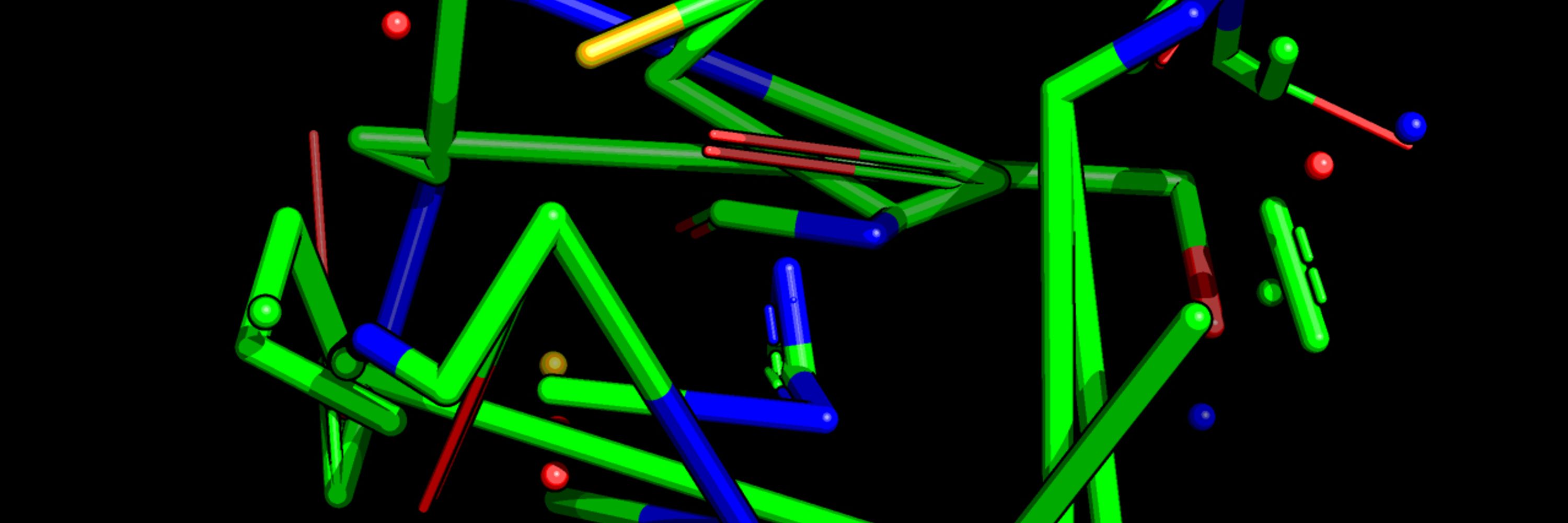
Matteo Ferla
@matteoferla.bsky.social
Cheminformatician/computational-biochemist working on drug discovery (señor postdoc, CMD-PX / OPIG, University of Oxford)
⌬ ⚗️💻
Author of michelanglo.sgc.ox.ac.uk and Fragmenstein
⌬ ⚗️💻
Author of michelanglo.sgc.ox.ac.uk and Fragmenstein
Ghoulish calculations? Sounds like a job for an RTX6666

October 31, 2025 at 10:56 AM
Ghoulish calculations? Sounds like a job for an RTX6666
I wrote a blogpost ( blog.matteoferla.com/2025/08/conf... ) about a potential aid to crystallography thought up when I worked w/ @xchem.bsky.social: generating a fake crystal lattice from a protein model in order to design optimal crystal contacts with ProteinMPNN. #ProteinDesign #StructuralBiology

Confabulating a crystal lattice
Matteo Ferla, a blog containing various tidbits of useful information, how-tos and what-ifs from biochemistry to Star Trek.
blog.matteoferla.com
August 17, 2025 at 6:02 PM
I wrote a blogpost ( blog.matteoferla.com/2025/08/conf... ) about a potential aid to crystallography thought up when I worked w/ @xchem.bsky.social: generating a fake crystal lattice from a protein model in order to design optimal crystal contacts with ProteinMPNN. #ProteinDesign #StructuralBiology
As my final task working in @opig.stats.ox.ac.uk & @cmd.ox.ac.uk I wrote a code-filled blogpost discussing what I did as a poweruser with RFdiffusion & co. to design inserts, linkers and more for specific problems to aid crystallography:
www.blopig.com/blog/2025/04... 📚 #proteinengineering
www.blopig.com/blog/2025/04... 📚 #proteinengineering
AI generated linkers™: a tutorial | Oxford Protein Informatics Group
www.blopig.com
April 29, 2025 at 3:40 PM
As my final task working in @opig.stats.ox.ac.uk & @cmd.ox.ac.uk I wrote a code-filled blogpost discussing what I did as a poweruser with RFdiffusion & co. to design inserts, linkers and more for specific problems to aid crystallography:
www.blopig.com/blog/2025/04... 📚 #proteinengineering
www.blopig.com/blog/2025/04... 📚 #proteinengineering
Why use a polyglycine linker in 2025?!

February 20, 2025 at 2:41 PM
Why use a polyglycine linker in 2025?!
Some ideas are cool, but aren't easily doable, so I wrote a blog post about one: de novo binders that spontaneously form an irreversible isopeptide bond with their target protein
www.blopig.com/blog/2025/01... —what's the catch? Many
www.blopig.com/blog/2025/01... —what's the catch? Many

January 26, 2025 at 12:50 PM
Some ideas are cool, but aren't easily doable, so I wrote a blog post about one: de novo binders that spontaneously form an irreversible isopeptide bond with their target protein
www.blopig.com/blog/2025/01... —what's the catch? Many
www.blopig.com/blog/2025/01... —what's the catch? Many
Reposted by Matteo Ferla
OPIG is now on Bluesky!
Follow us for updates about the group's latest work, web app updates, and more.
opig.stats.ox.ac.uk
Follow us for updates about the group's latest work, web app updates, and more.
opig.stats.ox.ac.uk
OPIG
Oxford Protein Informatics Group
opig.stats.ox.ac.uk
January 15, 2025 at 1:53 PM
OPIG is now on Bluesky!
Follow us for updates about the group's latest work, web app updates, and more.
opig.stats.ox.ac.uk
Follow us for updates about the group's latest work, web app updates, and more.
opig.stats.ox.ac.uk
Fragmenstein is finally published! ⌬🔩📗
This tool stitches together the atoms of parent hits and re-animates (minimises) them into a conformation close to the parents, preserving their interactions: a must for crystallography-driven drug discovery
doi.org/10.1186/s133...
#chemsky #drugdiscovery
This tool stitches together the atoms of parent hits and re-animates (minimises) them into a conformation close to the parents, preserving their interactions: a must for crystallography-driven drug discovery
doi.org/10.1186/s133...
#chemsky #drugdiscovery

Fragmenstein: predicting protein–ligand structures of compounds derived from known crystallographic fragment hits using a strict conserved-binding–based methodology - Journal of Cheminformatics
Current strategies centred on either merging or linking initial hits from fragment-based drug design (FBDD) crystallographic screens generally do not fully leaverage 3D structural information. We show...
doi.org
January 14, 2025 at 4:42 PM
Fragmenstein is finally published! ⌬🔩📗
This tool stitches together the atoms of parent hits and re-animates (minimises) them into a conformation close to the parents, preserving their interactions: a must for crystallography-driven drug discovery
doi.org/10.1186/s133...
#chemsky #drugdiscovery
This tool stitches together the atoms of parent hits and re-animates (minimises) them into a conformation close to the parents, preserving their interactions: a must for crystallography-driven drug discovery
doi.org/10.1186/s133...
#chemsky #drugdiscovery
There has been great discussions here about natural products for drug discovery. I want to add my take: the biosynthesis of these compounds often evolved as deterrents to kill us while our physiology evolved to fight them. blog.matteoferla.com/2025/01/natu... #chembio #chemsky
January 8, 2025 at 10:29 PM
There has been great discussions here about natural products for drug discovery. I want to add my take: the biosynthesis of these compounds often evolved as deterrents to kill us while our physiology evolved to fight them. blog.matteoferla.com/2025/01/natu... #chembio #chemsky
In an internal presentation today I had this comedy slide, which I am rather pleased with

December 19, 2024 at 10:49 AM
In an internal presentation today I had this comedy slide, which I am rather pleased with

